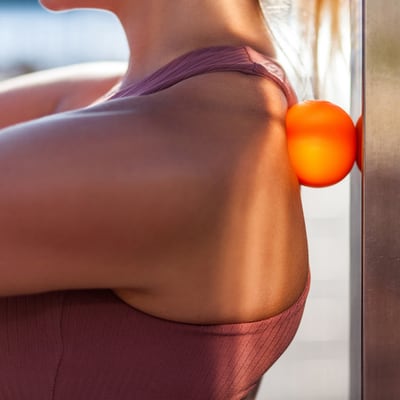A noisy “release”?
A reader asked me (responding to my recent-ish post about the concept of “release” in manual therapy):
I’ve got constant shoulder pain. I did a massage session with balls — focused on triceps, deltoids, traps, lats, etc. — and as I worked and improved bad spots of soft tissue there were instances where I felt a sudden positive change accompanied by sound from the muscle? Fascia? Joint?

It probably wasn’t joints. But soft tissue sometimes makes noise when you push and pull on it. Such sounds probably don’t indicate any change that actually matters. In other words, we can probably get the same benefit without the sound.
But the sound — as with joint pops — is something that the mind easily surrounds with an impression of significance, like an oyster making a pearl around a grain of sand.
This makes it hard to know whether a tissue noise is actually related to something important. It could be! It’s not impossible, obviously.
One of my personal pain stories is that I once experienced profound relief (release!) from neck pain after a noisy joint pop: my neck had felt painfully stuck, and then it clearly got suddenly un-stuck, and the contrast felt like a big damned deal, such that I’ve never forgotten it.
And yet — maybe even more important to notice — my neck has popped similarly during many other neck pain incidents in the years since, without ever feeling anything remotely like That One Time.
So clearly joint noise can be associated with something important, but it is probably neither necessary nor sufficient for the experience of a sudden improvement in symptoms.
So why was that shoulder massage noisy? The sound was almost certainly the breaking of small, sticky adhesions between layers of tissue. Yes, that is a thing. If you grab a handful of loose skin on someone’s back and pull away from the underlying muscle, there’s a good chance you’ll hear and feel a soft, wet tearing sound. It can be painless, or a bit uncomfortable, or even a lot in a few people. This is a sound every massage therapist knows — and it’s probably about as medically potent as blowing your nose. The tearing is probably not the “active ingredient,” not the reason massage feels good or does good. But the noise can happen at the same time as the other, less noisy benefits of massage and other soft-tissue manipulations.
And what benefits are those, exactly? Other than noises, what makes us think we’ve enjoyed a “release”? That is exactly what I explored in the (members only) release post. And I discuss soft tissue adhesions in my articles about fascia and neurodynamic stretching, and in much more detail in my book about “trigger points.”
Addendum: Could the noise have been calcific tendinitis?
Almost certainly not. Despite calling calcific tendinitis "crispy" in a recent post, the reality is that tendinous calcifications tend to be more wispy than crispy, diffuse accumulations of calcium deposits throughout the tissue, not actually even a solid, much closer to damp snowflakes than dry cornflakes. They tend to look much more bone-like on an x-ray than they actually are, because calcium reflects x-rays quite well. Finally, calficications tend to occur in specific and deeper tissues right around the head of the humerus, which would be difficult if not almost impossible to even reach, especially with a ball, and any sound would be rather muffled in any case. So I think it’s extremely unlikely this particular patient's self-massage of the region was related to calcific tendinitis.